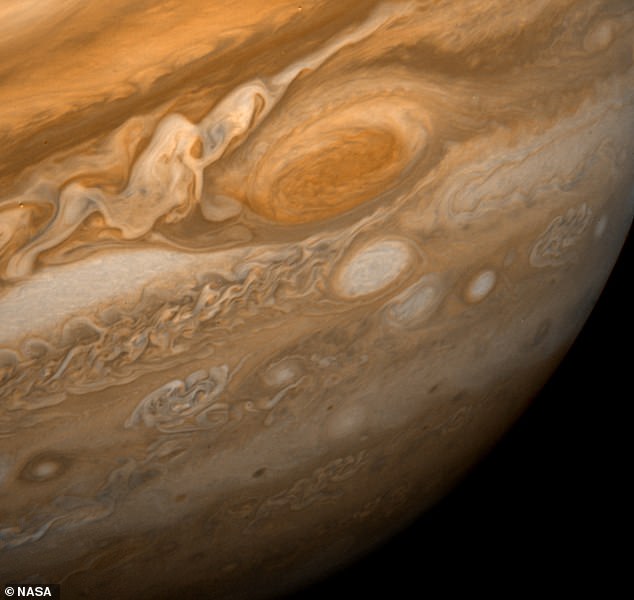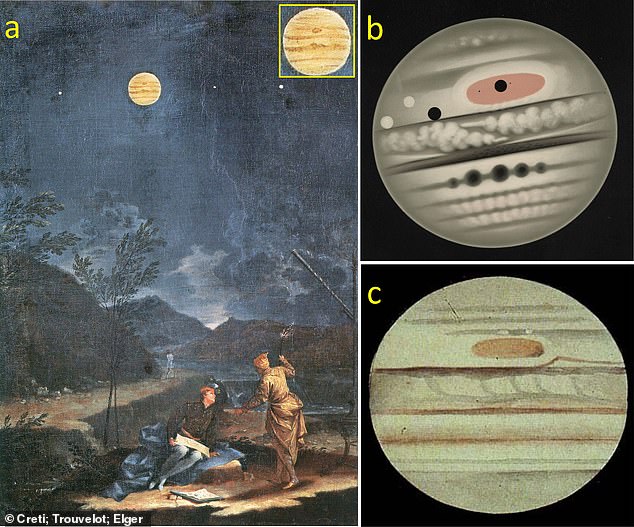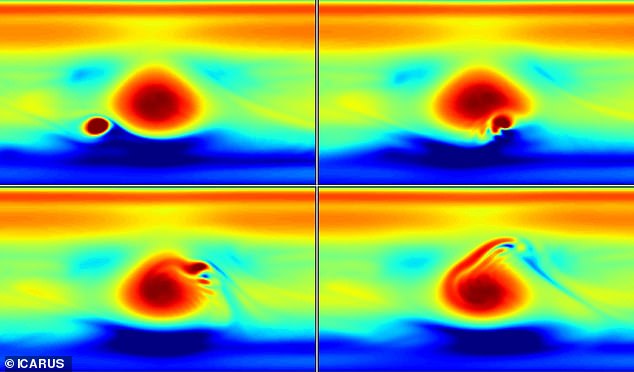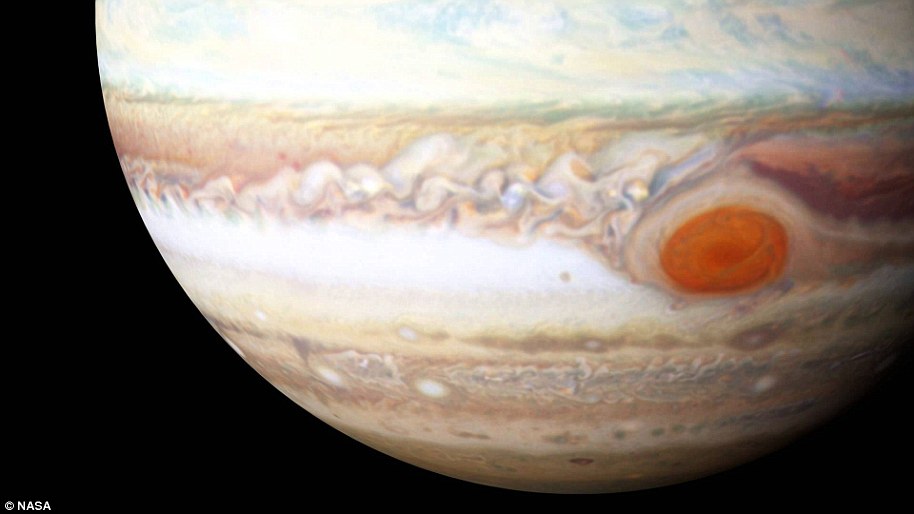Jupiter’s Great Red Spot is SHRINKING – and now scientists think they finally know why
It is a swirling mass of crimson clouds, more than 8,000 miles (13,000 kilometers) wide – large enough to cover the entire Earth.
But the Great Red Spot on Jupiter’s surface is shrinking – and scientists finally know why.
Experts say the area has long maintained its massive size by swallowing smaller storms, but these could gradually diminish.
However, the huge red tornado remains shrouded in mystery.
Astronomers aren’t sure exactly when the spot formed, why it formed, or why it is red.
Look at a photograph or artist’s illustration of Jupiter and you’ll likely see the Great Red Spot – a huge spinning storm in the planet’s atmosphere
Jupiter’s Great Red Spot is located in Jupiter’s southern hemisphere and is a swirling, red-orange oval of high pressure more than 10,000 miles (16,000 kilometers) wide.
The wind blows counterclockwise at a speed of over 320 kilometers per hour, making it an ‘anticyclone’.
No one knows when it started, but people have been observing it since 1831, and possibly even earlier.
But its size has been shrinking for nearly a century, especially over the last 50 years.
Since 2012, the spot has become more circular and is shrinking faster, by about 900 kilometers per year.
In the late 19th century its width was estimated at about 38,000 kilometers, but now it is about 14,000 kilometers wide.
“Many people have looked at the Great Red Spot over the past 200 years and been as fascinated by it as I am,” said lead author Caleb Keaveney, a doctoral candidate in space meteorology at Yale University.
“Many of those people weren’t professional astronomers – they were just passionate and curious.”

The spot, however, is still shrouded in mystery. Astronomers don’t know exactly when it formed, why it formed, or even why it is red.

People have seen the spot as early as 1831—and possibly even earlier. (a) Painting of Jupiter by Donato Creti in 1711 has a reddish spot (inset). (b) Drawing by French artist and painter EL Trouvelot on November 2, 1880). (c) Drawing by T. G. Elger on November 28, 1881. Notice in (b) and (c) that the spot is oval in shape.
Using a computer model, Keaveney and colleagues simulated the interactions between the Great Red Spot and smaller transient storms on Jupiter.
By ‘feeding’ the Great Red Spot a ‘diet of smaller storms’, they could control how big or small the spot became.
The model did indeed suggest that ‘eating up’ smaller storms makes the Great Red Spot larger.
The fact that the spot is getting smaller suggests that fewer of these small storms are occurring.
While this isn’t something the new study found or even set out to establish, the team plans to explore this question in future research.
‘Whether the GRS is actually feeding on fewer storms than before is a question for future research,’ Keaveney told MailOnline.
If scientists discover what makes the spot smaller, they may be able to predict that it will eventually disappear.

This image shows the large Great Red Spot ‘devouring’ a smaller storm during one of the team’s simulated interactions
Jupiter is the largest planet in our solar system, with a diameter of about 142,800 kilometers.
It’s a gas planet, so while a spaceship can’t land on Jupiter, it also wouldn’t be able to fly through it unscathed.
Jupiter’s characteristic stripes and swirls are actually cold, windy clouds of ammonia and water, suspended in an atmosphere of hydrogen and helium.
The team says additional models will allow researchers to refine the new findings and hopefully gain more insight into the original formation of the Great Red Spot.
“Jupiter’s Great Red Spot is one of the oldest and largest single meteorological phenomena in the solar system,” they write in their paper, published in Icarus.
‘Such model simulations and observations are needed to ultimately reveal the dynamics underlying the evolution of the oldest and largest vortex in our solar system.’

